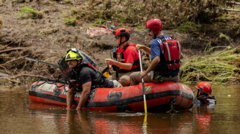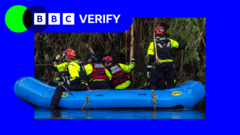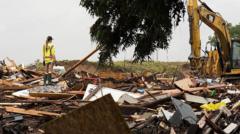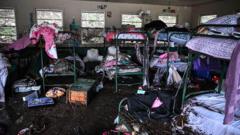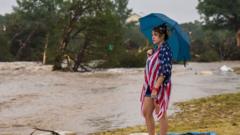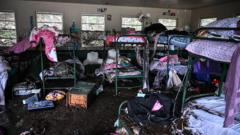Following devastating floods in Texas that claimed 120 lives, including 96 in Kerr County, officials are being questioned about the apparent communication failures as rescue operations continue.
Texas Emergency Alert Failures Under Scrutiny After Deadly Floods
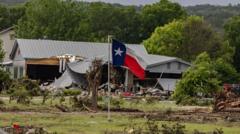
Texas Emergency Alert Failures Under Scrutiny After Deadly Floods
Mounting concerns arise over the delay in emergency alerts that failed to protect Kerrville residents during catastrophic flooding.
In the wake of the catastrophic flash floods that struck Texas, officials are answering for the alarming lag in emergency alerts that may have endangered Kerrville residents’ lives. A recent crisis left the region reeling, with over 160 individuals still unaccounted for and total fatalities at 120, raising serious questions regarding the management of emergency communication.
During a press briefing, Kerrville Police community services officer Jonathan Lamb was pressed for information regarding a potential radio failure that delayed crucial alerts. The issues surrounding the early morning flash floods on July 4th have ignited critique, particularly after audio recordings surfaced revealing that a firefighter had requested a timely alert to warn residents of rising waters at about 4:22 AM. Unfortunately, Kerr County officials did not notify the public until nearly six hours later.
Reports indicate that the first notification from the Kerr County CodeRED alert system arrived about 90 minutes after the initial warning, leaving time for hundreds to be trapped in rapidly rising waters. The alarming flooding was sparked by an estimated 100 billion gallons of rain, causing the Guadalupe River to rise dramatically.
Kerr County, including Kerrville, bore the brunt of the tragedy with 96 lives lost, among them numerous children from a nearby summer camp. In light of the despair, officials have faced scrutiny over why prompt warnings were not issued. Sheriff Larry Leitha mentioned he learned about the flooding around 4-5 AM and is now working to establish a timeline of events, though he emphasized that his priority remains on recovery efforts.
Despite preemptive weather alerts issued by the National Weather Service, officials cited various reasons for the alert delays—ranging from poor cell service to a desensitized public regarding flood warnings in the region.
In a show of federal support, President Trump granted a disaster declaration allowing FEMA resources to flow into Central Texas for disaster recovery operations. Currently, search and rescue efforts involve over 2,100 on-ground responders, alongside helicopters, boats, and specialized rescue equipment. Lieutenant Colonel Ben Baker of the Texas Parks & Wildlife Department remarked on the immense hazard posed by mud and debris, complicating recovery efforts for the still-missing.
As recovery operations press on, the unanswered questions about emergency responses during the floods remain a looming concern for the community and officials alike.





